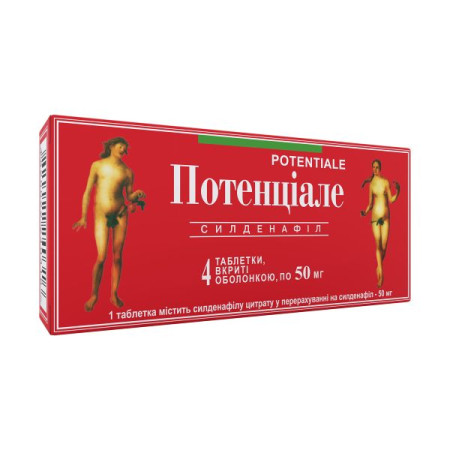Tigeron film-coated tablets 500 mg blister No. 5

Levofloxacin is a synthetic antibacterial drug from the fluoroquinolone group, it is the S (-) enantiomer of the racemic mixture of the drug ofloxacin.
As an antibacterial agent from the fluoroquinolone group, levofloxacin acts on the DNA-DNA gyrase complex and topoisomerase IV.
Indications for use
The drug is prescribed to adults for the treatment of the following infections:
Acute bacterial sinusitis. Exacerbation of chronic bronchitis. Community-acquired pneumonia. Complicated skin and soft tissue infections.In the above infections, the drug should be used only when it is considered inappropriate to use antibacterial drugs that are usually recommended for the initial treatment of these infections.
Complicated urinary tract infections (including pyelonephritis). Chronic bacterial prostatitis. Uncomplicated cystitis.The drug can also be used to complete a course of therapy in patients who have shown improvement during initial treatment with intravenous levofloxacin.
Official recommendations on the appropriate use of antibacterial drugs should be considered.
Contraindication
Hypersensitivity to levofloxacin, other quinolones or to the excipients of the drug.
Epilepsy.
History of tendon lesions due to fluoroquinolone use.
Childhood.
Pregnancy and breastfeeding.
Method of administration and doses
The drug should be taken 1 or 2 times a day. The dose depends on the type, severity of the infection and the sensitivity of the likely pathogen.
The drug can also be used to complete a course of therapy in patients who have shown improvement during initial treatment with intravenous levofloxacin; given the bioequivalence of parenteral and oral forms, the same dosage can be used.
Dosage. The following dosage recommendations can be given for the drug:
Dosage for patients with normal renal function (creatinine clearance > 50 mL/min)
| indication | Daily dose, mg (Depending on severity) | Number of receptions per day | Duration of treatment (Depending on severity) |
| Acute bacterial sinusitis | 500 | 1 time | 10-14 days |
| Exacerbation of chronic bronchitis | 500 | 1 time | 7-10 days |
| community-acquired pneumonia | 500 | 1-2 times | 7-14 days |
| pyelonephritis | 500 | 1 time | 7-10 days |
| Complicated urinary tract infections (including pyelonephritis) | 500 | 1 time | 7-14 days |
| uncomplicated cystitis | 250 * | 1 time | 3 days |
| Chronic bacterial prostatitis | 500 | 1 time | 28 days |
| Complicated skin and soft tissue infections | 500 | 1-2 times | 7-14 days |
* Since the tablet is not divisible, if the drug is prescribed in a dose of 250 mg or less, levofloxacin preparations with the possibility of such a dosage should be used.
Overdose
Symptoms: The most important signs to expect after acute overdose of levofloxacin are central nervous system symptoms, including confusion, hallucinations, tremor, dizziness, impaired consciousness and seizures, QT prolongation, and gastrointestinal reactions such as nausea and mucosal erosions.
Treatment. In case of overdose, symptomatic treatment should be given. ECG monitoring is necessary, as there is a possibility of prolongation of the QT interval. Antacids can be used to protect the gastric mucosa. Hemodialysis, including peritoneal dialysis and HAPD, are not effective in removing levofloxacin from the body. There are no specific antidotes.
Special instructions
Use during pregnancy or breastfeeding
Pregnancy.
Data on the use of levofloxacin in pregnant women are limited.
Animal studies do not indicate direct or indirect harmful effects with respect to reproductive toxicity. However, due to the lack of human studies and experimental data indicating a risk of damage to the articular cartilage of the growing organism by fluoroquinolones, levofloxacin should not be administered to pregnant women.
Breastfeeding period.
Levofloxacin is contraindicated in women who are breastfeeding. There is insufficient information on the excretion of levofloxacin into breast milk, although other fluoroquinolones are excreted in breast milk. Due to the lack of human studies and the potential for fluoroquinolones to damage the articular cartilage of the growing fetus, levofloxacin should not be administered to women who are breastfeeding.
Fertility.
Levofloxacin is known not to cause impairment of fertility and reproductive function in rats.
Children
The drug is contraindicated in children under 18 years of age.
Ability to influence reaction speed when driving vehicles or other mechanisms
Some adverse reactions (e.g. dizziness/vertigo, drowsiness, visual disturbances) may impair the patient's ability to concentrate and react quickly and thus pose an increased risk in situations where these qualities are of particular importance (e.g. when driving a car or using machinery).
Composition
1 tablet contains levofloxacin hemihydrate equivalent to levofloxacin 500 mg
Excipients: povidone K29/32, microcrystalline cellulose, crospovidone, magnesium stearate, colloidal silicon dioxide, Opadry 03B84681 pink coating: hypromellose, titanium dioxide (E 171), polyethylene glycol, red iron oxide (E 172), yellow iron oxide (E 172).
Storage conditions
Store at a temperature not exceeding 25 °C.
Keep out of reach of children.
Shelf life - 3 years.
There are no reviews for this product.
There are no reviews for this product, be the first to leave your review.
No questions about this product, be the first and ask your question.




